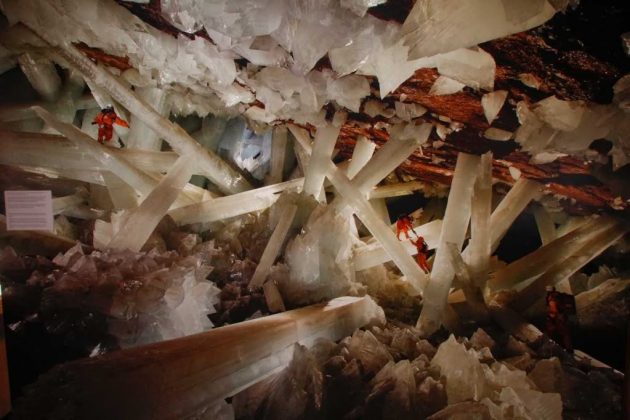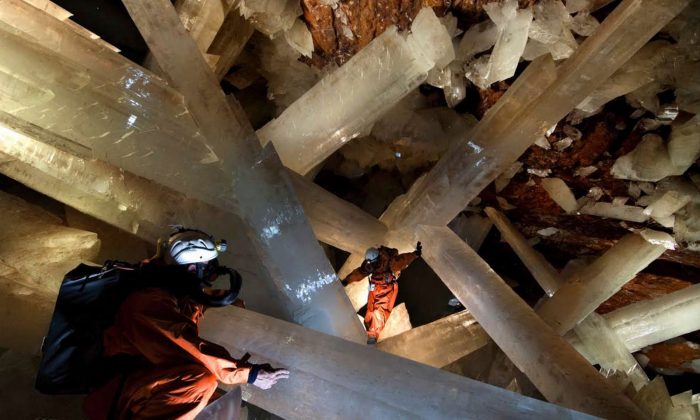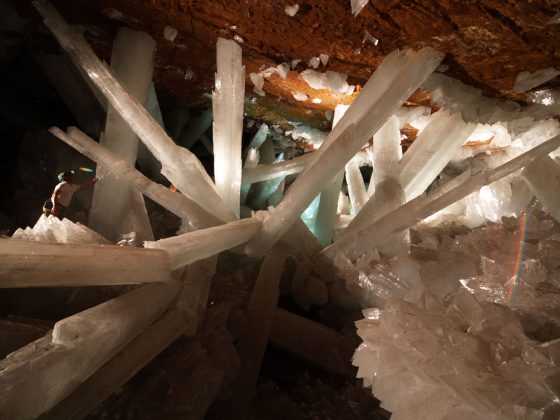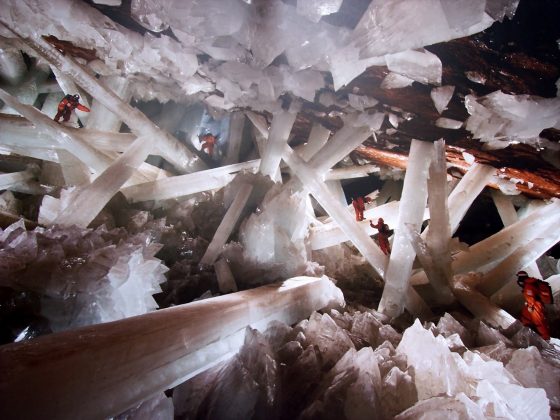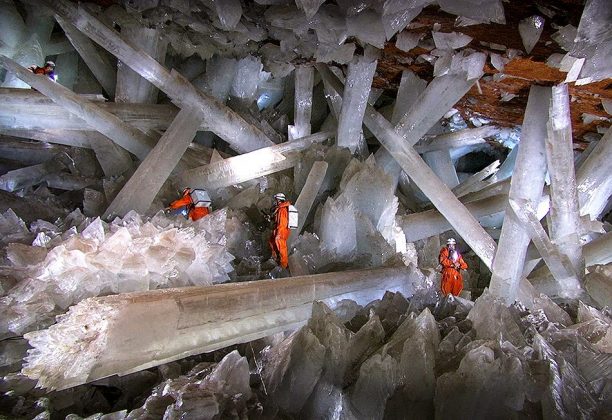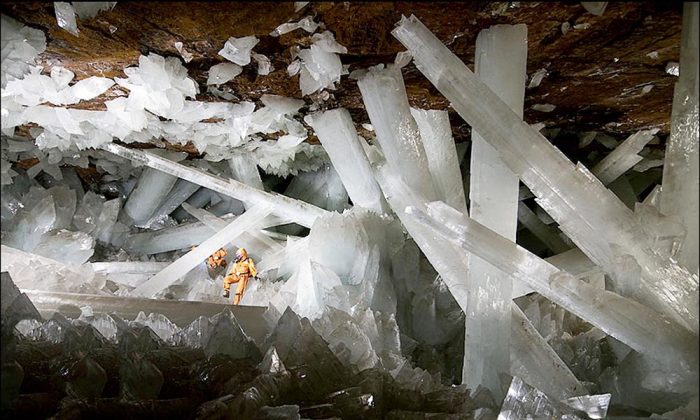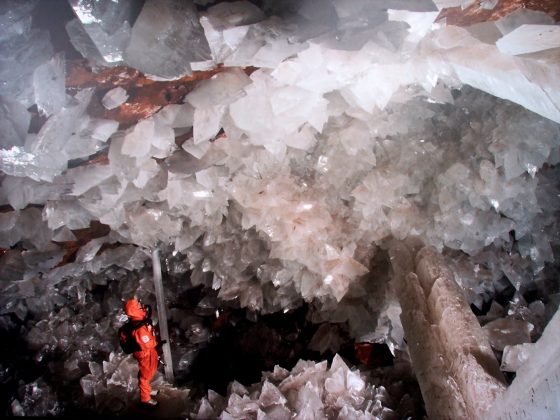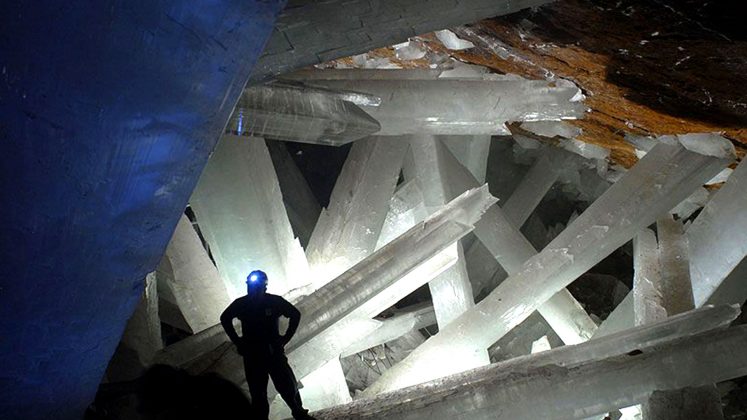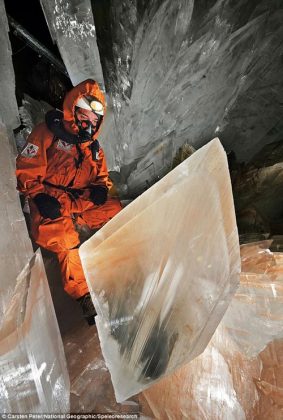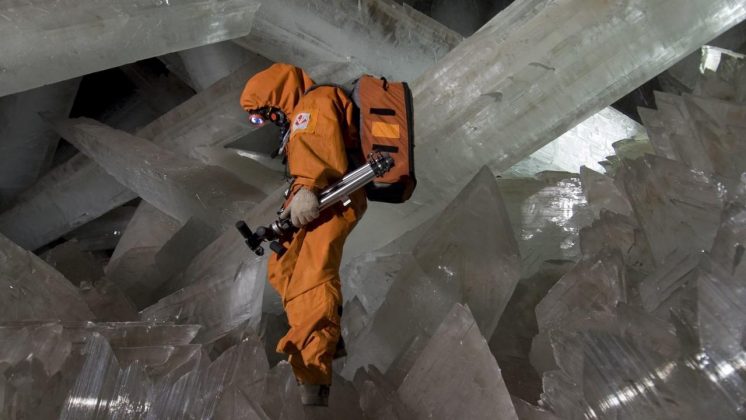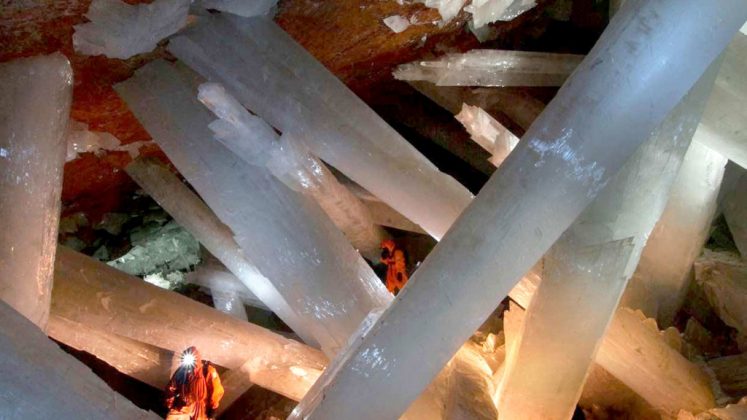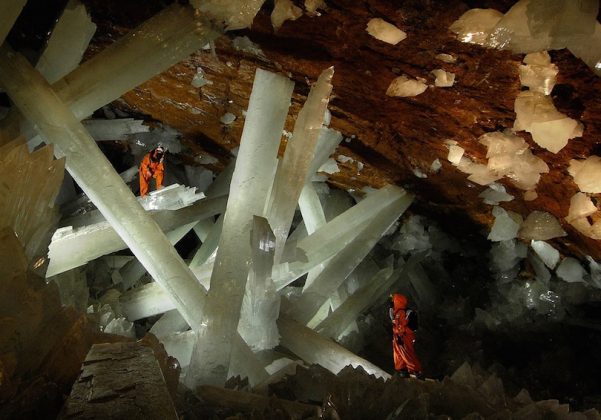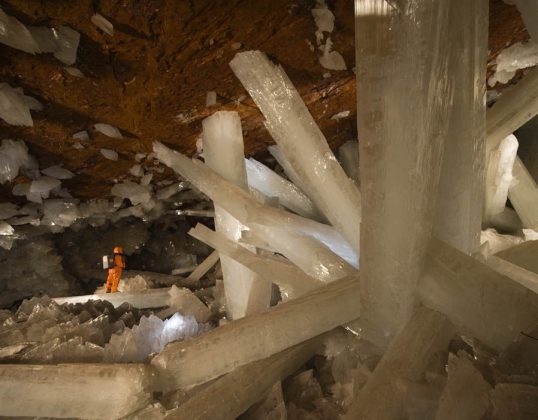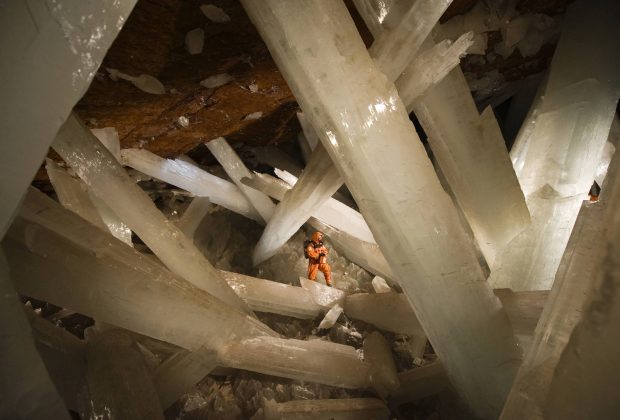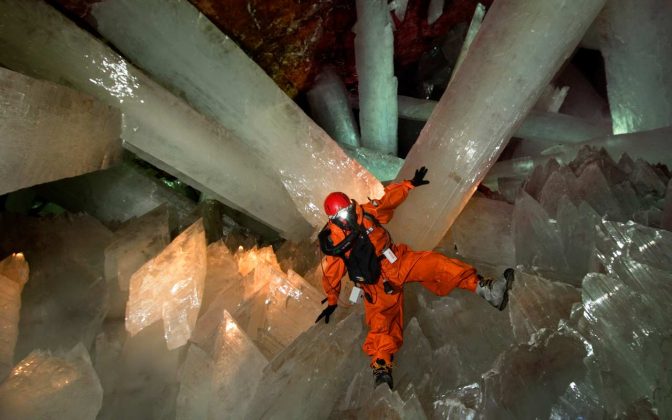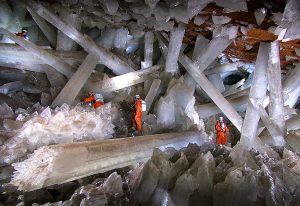
Cave of the Crystals or Giant Crystal Cave is a cave connected to the Naica Mine 300 metres (980 ft) below the surface in Naica, Chihuahua, Mexico.
One of the world’s most spectacular geographical discoveries was the cave of giant crystals with its selenite crystals of a size never seen before. most of them measure six meters in length, with some of them reaching eleven meters. the temperature at this depth varies from 45°C to 50°C, while the percentage of humidity ranges from 90 to 100%, meaning that human beings cannot survive there for longer than two hours.
In the year 2000 at -300 m the Crystals’ cave was discovered. This cave is a true wonder of the underground world. It is one of the most spectacular geological and mineralogical discoveries ever made. It contains selenite mega crystals, some 11m in length and one meter thick. These are much larger than any crystals of this type ever found. The walls and particularly the floor of the cave are sprinkled with blocky single crystals that in some cases cluster to form a parallel aggregate.
Giant elongate selenite mega crystals, the biggest ever found on the planet, grow from some of these groups of blocky crystals or directly from the floor, and some criss-cross the cave from side to side. Most of the crystals are 6 meters long but several reach 11 m creating a natural scenario of unparalleled beauty, beyond imagination, an unreal dream world discovered by chance.
The cave’s temperature is 50ºC and 100% humidity, where man can survive only a few minutes. It will continue to be explored with new, specially designed gear, which allows the explorer to remain in the cave for almost one hour. The Crystals’ Cave gives us a glimpse into geological time, thanks to new space-age technology.
Exploring teams, film teams and scientists continue to risk their lives at these hellish temperatures, in order to document this gorgeous underground fantasy-land for future generations.
Formation of the crystals
Naica lies on an ancient fault above an underground magma chamber below the cave. The magma heated the ground water which was saturated with sulfide ions (S2−). Cool oxygenated surface water contacted the mineral saturated heated water, but the two did not mix due to the difference in their densities. The oxygen slowly diffused into the heated water and oxidized the sulfides (S2−) into sulfates (SO42−). The hydrated sulfate gypsum crystallized at an extremely slow rate of over the course of at least 500,000 years forming the enormous crystals found today. The key to this process is the slow diffusion of oxygen from the cool, low density surface water into the hot, high density ground water.
Discovery
In 1910 miners discovered a cavern beneath the Naica mine workings, the Cave of Swords (Spanish: Cueva de las Espadas). It is located at a depth of 120 m, above the Cave of Crystals, and contains spectacular, smaller (1 m long) crystals. It is speculated that at this level, transition temperatures may have fallen much more rapidly, leading to an end in the growth of the crystals.
Giant Crystal Cave was discovered in 2000 by miners excavating a new tunnel for the Industrias Peñoles mining company located in Naica, Mexico, while drilling through the Naica fault, which they were concerned would flood the mine. The mining complex in Naica contains substantial deposits of silver, zinc and lead.
The Cave of Crystals is a horseshoe-shaped cavity in limestone. Its floor is covered with perfectly faceted crystalline blocks. Huge crystal beams jut out from both the blocks and the floor. The caves are accessible today because the mining company’s pumping operations keep them clear of water. If the pumping were stopped, the caves would again be submerged in water. The crystals deteriorate in air, so the Naica Project is attempting to visually document the crystals before they deteriorate further.
Two other smaller caverns were also discovered in 2000, Queen’s Eye Cave and Candles Cave, and a further chamber was found in a drilling project in 2009. The new cave, named Ice Palace, is 150 m deep and is not flooded, but its crystal formations are much smaller, with small ‘cauliflower’ formations and fine, threadlike crystals. All of the caves discovered currently are: Cave of Crystals, Queen’s Eye, Candles Cave, Ice Palace and Cave of Swords.
Photo
Video
Map
Reference:
NAICA Project: NAICA PROJECT / CRYSTAL’S CAVE
Wikipedia: Cave of the Crystals


